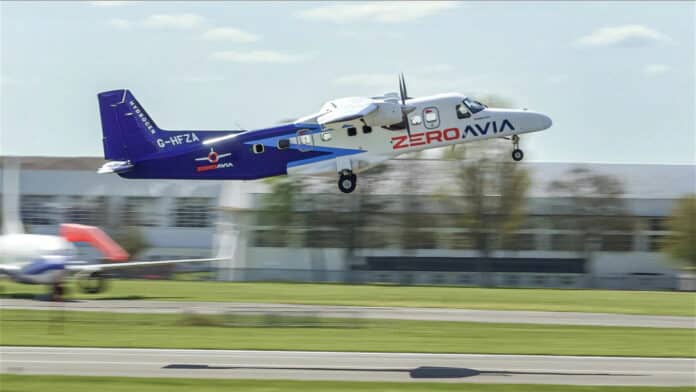ZeroAvia and Verne have signed a Memorandum of Understanding to explore the possibilities of using cryo-compressed hydrogen (CcH2) on aircraft and for conducting CcH2 refueling from gaseous hydrogen (GH2) and liquid hydrogen (LH2) sources.
ZeroAvia is committed to developing hydrogen-electric engines for all types of aircraft to reduce the aviation industry’s carbon footprint. According to the Environmental Protection Agency, aviation accounts for 10% of all U.S. transportation greenhouse gas (GHG) emissions and 3% of total U.S. GHG emissions.
Verne, on the other hand, is a startup focused on hydrogen storage and refueling technology using cryo-compressed hydrogen for heavy-duty sectors. This technology stores gaseous hydrogen at cold temperatures, increasing the energy density of the fuel, which could enable a longer range compared to GH2-powered aircraft.
Verne’s analysis suggests that cryo-compressed hydrogen can achieve 40% greater usable hydrogen density than liquid hydrogen and 200% greater usable hydrogen density than 350 bar gaseous hydrogen. Additionally, the application of cryo-compressed hydrogen promises to significantly reduce the cost of densification and refueling time, increase dormancy time relative to LH2 systems and potentially eliminate venting for pressure management.
ZeroAvia and Verne plan to explore the potential benefits of scaling CcH2 storage and refueling infrastructure at airports across the globe, especially as hydrogen-electric propulsion is used to support larger aircraft. They will also collaborate to identify suitable airport locations in California for this technology.
Verne has developed large hydrogen storage systems that can deliver 4 MWh of storage. They recently announced the demonstration of a 1 MWh prototype with Lawrence Livermore National Laboratory. Verne has received federal grants for their technology development and has the support of major investors such as Amazon’s Climate Pledge Fund and Caterpillar Venture Capital. As well as rapid work to develop its propulsion technology, ZeroAvia has been active in demonstrating hydrogen airport infrastructure.
“Aviation is a massive potential market for Verne, as it becomes clear that hydrogen is critical to tackling the industry’s climate impact,” said Ted McKlveen, Chief Executive Officer & Co-Founder of Verne. “Airports can be centers of hydrogen activity, with co-located hydrogen demand for aircraft, airport ground operations, and on-road commercial transportation. Cryo-compressed hydrogen has a key role in optimizing this ecosystem.”
ZeroAvia is making progress in its hydrogen-electric engine technology. They have already begun flight testing a prototype of their engine on a Dornier 228 aircraft with a ZA600 plate number at their U.K. base. They are also planning to retrofit a prototype of their engine with a ZA2000 plate number to a 76-seat Dash 8 400 in the U.S. These engines use hydrogen in fuel cells to generate electricity, which powers electric motors to turn the aircraft’s propellers. The best part is that the only emission from these engines is water, making them an environmentally friendly option.
